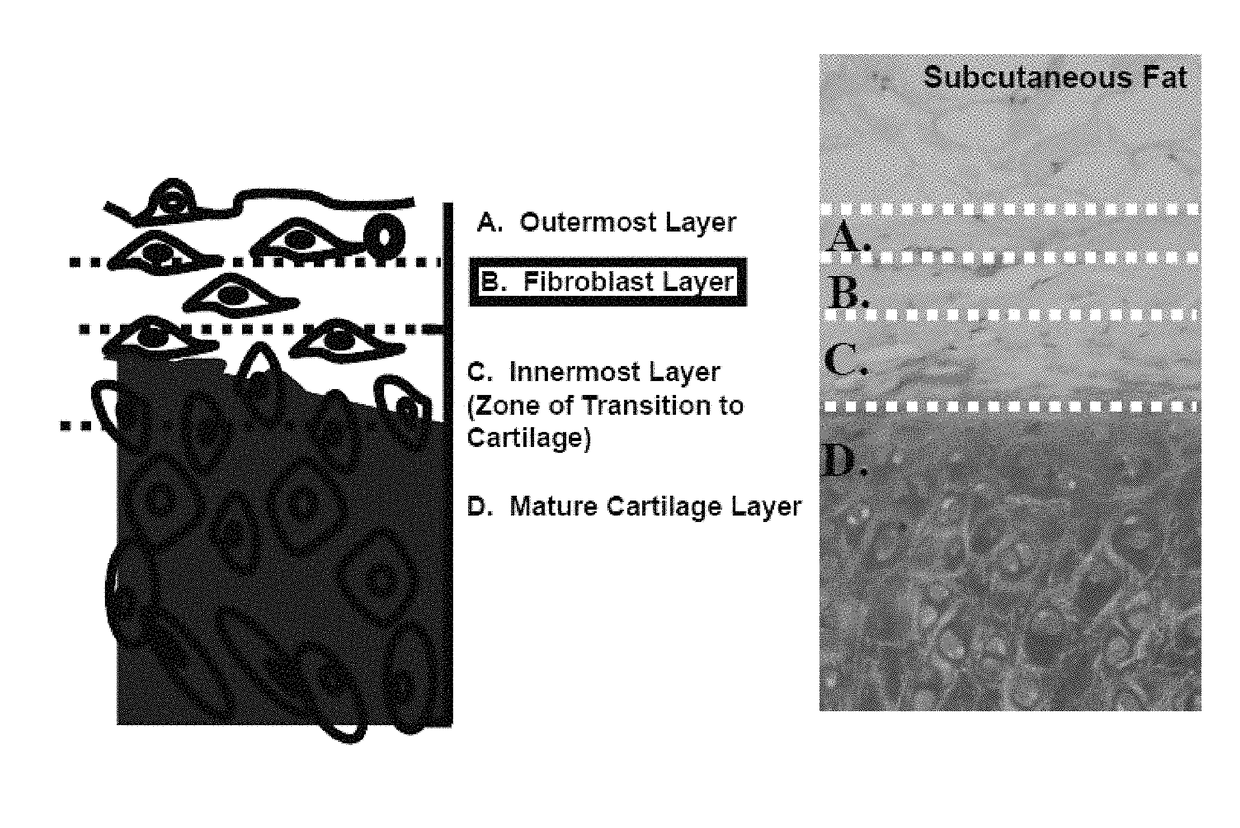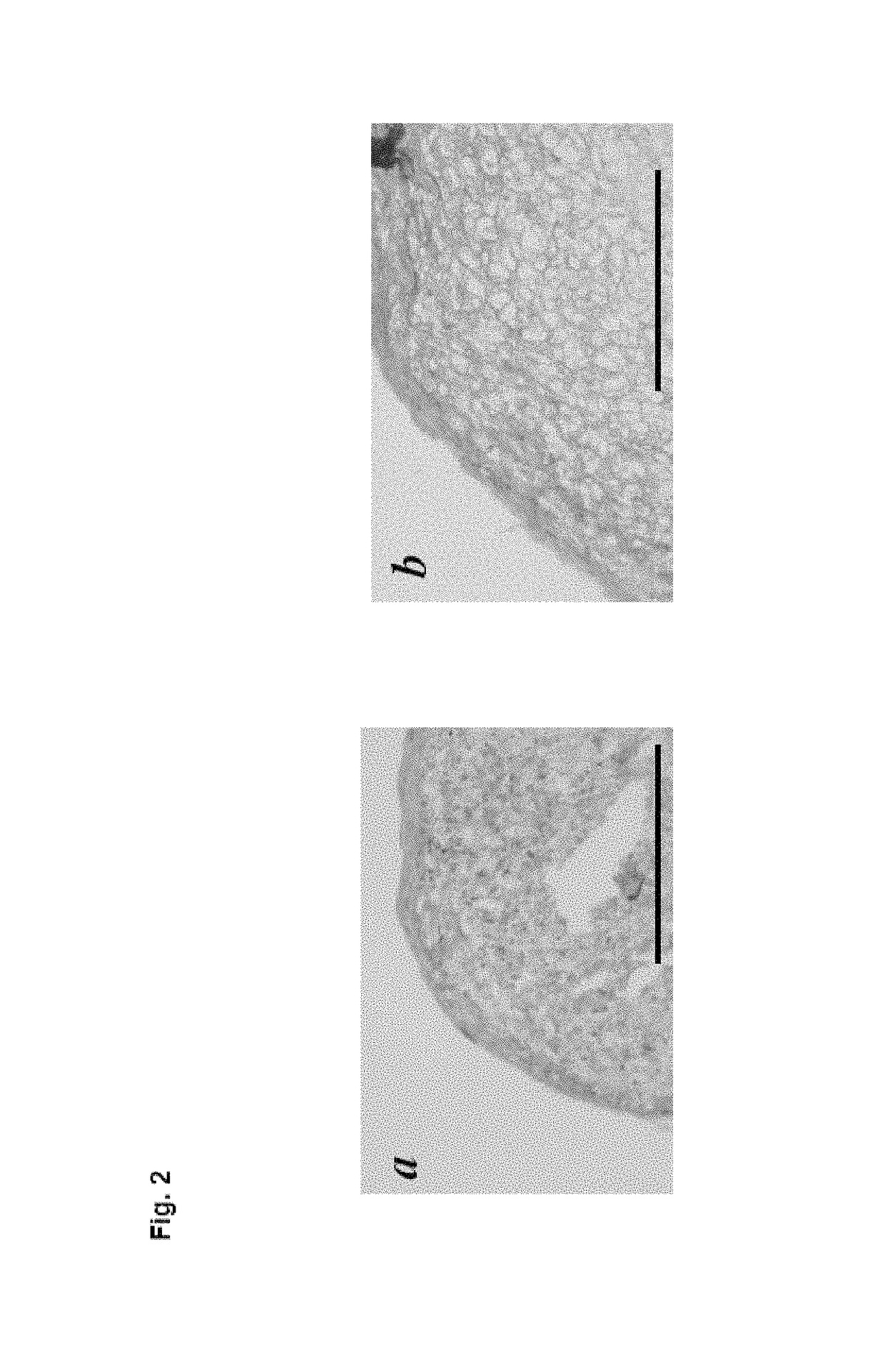Method for preparation of cartilage cell
a chondrocyte and cartilage technology, applied in the field of chondrocyte preparation, can solve the problems of limited amount of tissue that can be taken, donor site, and inability to regenerate cartilage, and achieve the effect of minimizing the invasion of donor sites
- Summary
- Abstract
- Description
- Claims
- Application Information
AI Technical Summary
Benefits of technology
Problems solved by technology
Method used
Image
Examples
example 1
[0136]Hereinbelow, the term “perichondrial tissue” at the time of collection refers histologically to the outermost layer and the fibroblast layer; and the term “tissue of perichondrium-cartilage transition zone” refers to the innermost layer.
Collection of Perichondrocytes
[0137]In order to collect a perichondrial tissue from a cartilage tissue such as auricular cartilage or costilcartilage (perichondria obtained from human auricular cartilage and left over after surgical operation were used with an approval obtained from patients or their parents; approval was also obtained from Kanagawa Prefectural Children Medical Center and the Ethics Committee of Yokohama City University Hospital), sharp tools such as tweezers and scissors were used. Alternatively, dull tools such as raspatories may be used. When sharp tools were used, a tissue section was prepared for each individual and examined for confirmation that the perichondrium alone had been collected (FIG. 1).
[0138]From the resultant ...
PUM
| Property | Measurement | Unit |
|---|---|---|
| shape | aaaaa | aaaaa |
| mass | aaaaa | aaaaa |
| color | aaaaa | aaaaa |
Abstract
Description
Claims
Application Information
 Login to View More
Login to View More - R&D
- Intellectual Property
- Life Sciences
- Materials
- Tech Scout
- Unparalleled Data Quality
- Higher Quality Content
- 60% Fewer Hallucinations
Browse by: Latest US Patents, China's latest patents, Technical Efficacy Thesaurus, Application Domain, Technology Topic, Popular Technical Reports.
© 2025 PatSnap. All rights reserved.Legal|Privacy policy|Modern Slavery Act Transparency Statement|Sitemap|About US| Contact US: help@patsnap.com



